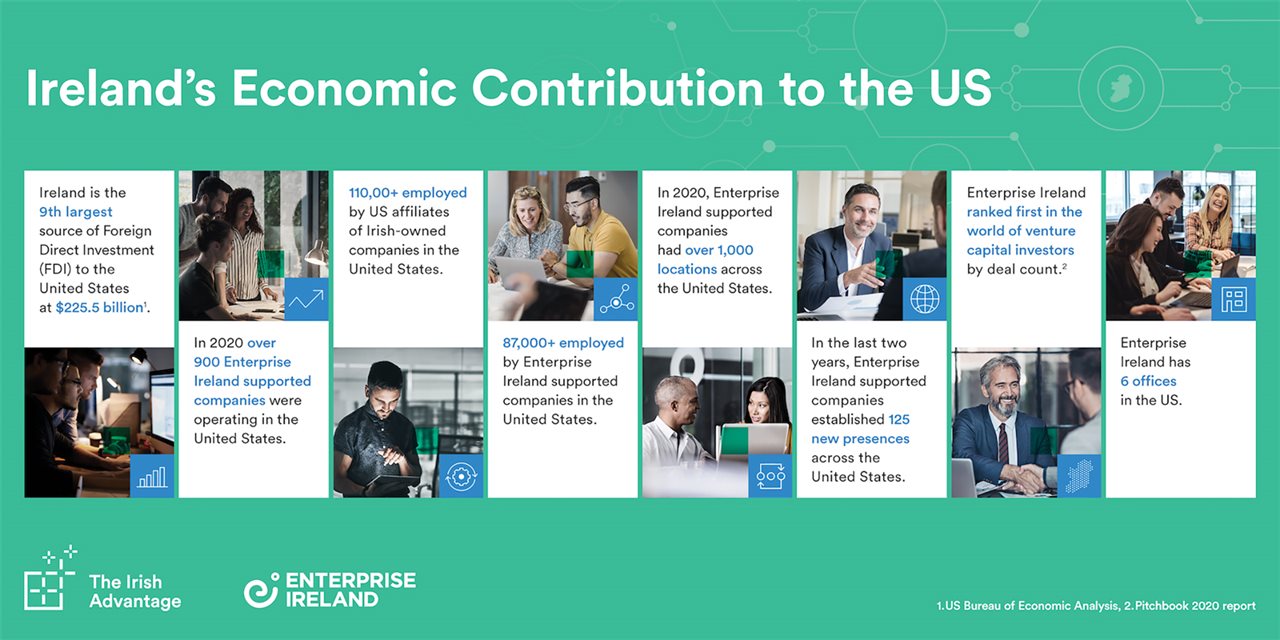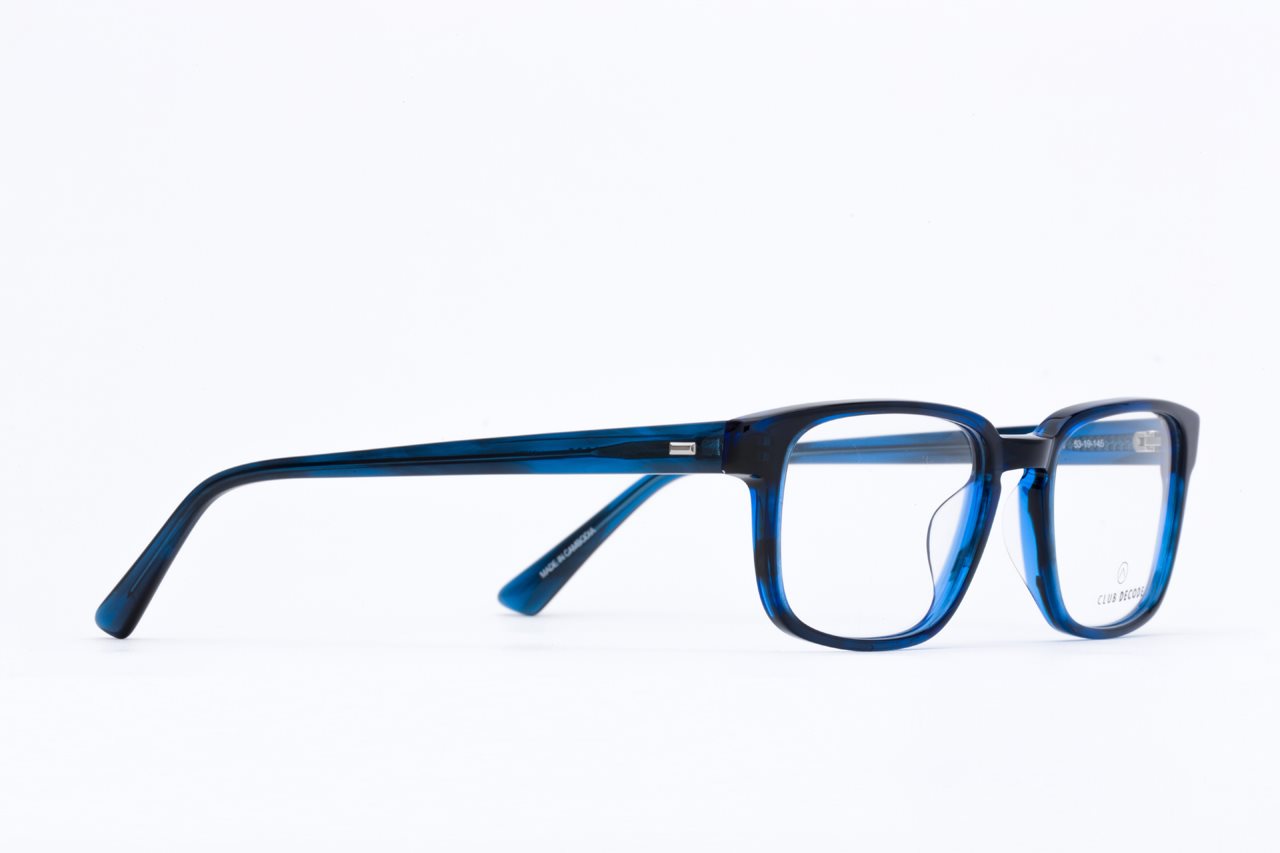2021-03-15T11:01:00
(BPT) –
Enterprise Ireland, the Irish government agency for the international development of Irish firms, reports employment by Irish businesses in the United States has reached 110,000 and foreign direct investment from Ireland into the United States economy hit $225.5 billion* — ranking Ireland in the top nine investment sources to the United States. The strong performance of Irish businesses in the United States was accelerated by resilience and preparedness developed in response to the 2016 Brexit referendum. Additionally, Ireland’s considerable strengths in life science and construction, engineering, smart energy, smart city and digital technology enabled Irish firms to support the U.S. government and business roll-out of COVID-19 remediations. According to an OECD report, Ireland is fifth in the world for the export of COVID-19 related products and services and sixth in the global market of countries responding best in terms of innovation to the pandemic.
“Irish innovation and entrepreneurship shone brightly in what was a dark year,” the Taoiseach Micheál Martin, Prime Minister of Ireland, said today. “I am highly encouraged by the resilience of Irish business leaders and their teams and I am proud of the positive impact they’re having in their business communities in the United States. 2021 promises to be a generation-defining year in the development of U.S.-Irish business partnerships. I am confident that Irish firms operating here will continue to advance the COVID-19 response, sustainability initiatives and infrastructure, and that we’ll see continued job growth and an increase in Irish FDI into the United States economy.”
Over 100 Enterprise Ireland-supported companies are responding to the pandemic with innovative solutions. Highlights include:
- In New York and New Jersey, Nearform was one of the first to develop and launch a COVID-19 contact-tracing app for government agencies and has since become the official COVID-19 app of several U.S. states.
- Irish biometric authentication solutions provider Daon has created VeriFLY, a mobile health passport. American Airlines is the first U.S. airline to adopt the VeriFLY technology, providing customers with an easy method of providing results from a negative coronavirus test and other completed documents required for international travel into the United States.
- From Monaghan, forklift truck manufacturer, Combilift, developed the Combi-Ventilate, a splitter device that can turn one ventilator into multiple ventilator stations.
- In Tampa, Shimmer Sensing, a leading provider of wearable wireless sensor products and solutions, partnered with the University of South Florida to research how Shimmer’s wearable device can help detect and assess the progression of COVID-19 in those who are most at-risk.
- In Illinois, Druid Software, recognized as a market leader for its mature 4G & 5G LTE Private Cellular technology, helped deploy a CBRS enabled OnGo Private 4G wireless network at Memorial Health Systems to provide secure, reliable connectivity to temporary triage and testing tents where doctors and nurses delivered emergency care during the COVID-19 outbreak.
“Ireland’s sustained positive contribution to the United States economy in a year of unprecedented turmoil is a testament to the depth of trust between our business communities; the quality of commercial relationships and the value that Irish firms bring to the United States,” Julie Sinnamon, Chief Executive Officer, Enterprise Ireland said today. “Now, with vaccine deployments taking hold and green shoots emerging in the economy, the indicators point to Irish firms investing even more time and resources into the United States.”
Over the past year, Enterprise Ireland saw an average of two new Irish-based businesses established weekly in the United States. In 2020, Irish firms bolstered employee rosters in traditional hubs of Irish entrepreneurship in San Francisco, New York, Chicago, Los Angeles, Boston and Philadelphia, and also in Irish firms in Florida, Texas, Georgia and Minnesota.
“The fact that so many Irish firms sought to strengthen their United States presence in a WFH business environment underscores the confidence Irish firms have in themselves and in this market,” Sean Davis, North America Regional Director, Enterprise Ireland said today. “This bold new confidence is forged on conviction in the products and services and also informed insights on the needs and preferences of United States partners and customers.”
Enterprise Ireland is one of Europe’s leading venture capitalists: the agency is ranked first both in Europe and globally for active seed investments, according to PitchBook. Enterprise Ireland operates from New York, Boston, Austin, Chicago, Seattle and San Francisco. In addition to funding support, Enterprise Ireland also provides services including export assistance and assistance with research and development, as well as a broad network of key global industry-specific contacts.
More than 110,00 people are employed by almost 900 Irish-owned companies with Enterprise Ireland representing 700 of these companies in the United States. These Irish-owned companies operate across all 50 states and proudly represent a broad range of industries including construction, education, energy, environmental engineering, medical devices and software.
About Enterprise Ireland
Enterprise Ireland is the Irish State agency that works with Irish enterprises to help them start, grow, innovate and win export sales in global markets. Enterprise Ireland partners with entrepreneurs, Irish businesses, and the research and investment communities to develop Ireland’s international trade, innovation, leadership and competitiveness. In this way, it supports sustainable economic growth and regional development, and helps create and sustain employment in Ireland. For more information, please visit IrishAdvantage.com.
###
*The United States Bureau of Economic Analysis.















